Top image by Leon Yan (@movable)
“Mei banfa” is a phrase that echoes loudly through some of Laoximen’s increasingly empty lane neighborhoods these days. “Nothing can be done.”
Known as the ‘Old West Gate’ of the city wall, this nearly 500-year-old corner of Shanghai’s Old City has been under siege as Shanghai continues to execute its ambitious plan to transform itself into a world-class metropolis. Soon, many historic shikumen lanehouses that represent a piece of Shanghai’s past will be torn down by bulldozers to make way for more tall and shiny high-rises a few years down the road.
Meanwhile, members of these tight-knit communities will be dispersed into remote corners of Shanghai like Pudong, Jiading, Fengxian, Songjiang and Chongming Island. Many of those I’ve spoken to here are resigned to the fact that nothing can deter the city government’s grand urban renewal initiatives. With a soundless collective sigh, they all say, “Mei banfa.”
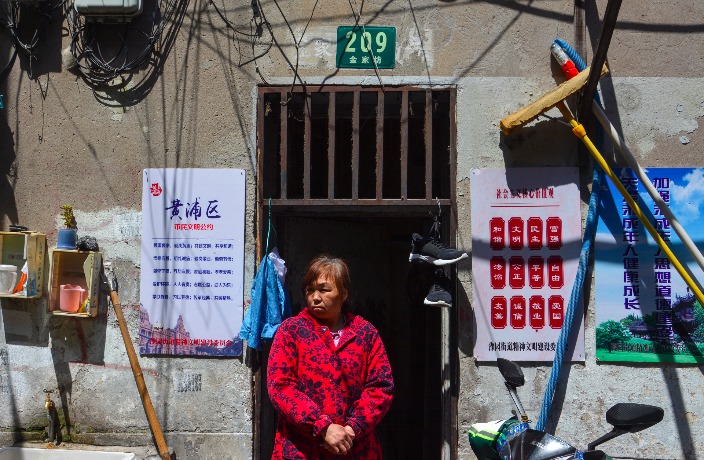
Photo by Dominic Ngai
The Inevitable
The demolition of lane neighborhoods, or lilongs, is nothing new for Shanghai. But last August, when the residents in a city block surrounded by Songxue Jie to the east, Zhonghua Lu to the west, Fangbang Zhong Lu to the north, and Fuxing Dong Lu to the south were told by the Huangpu district government that their neighborhood will be “reclaimed for the greater good,” netizens engaged in a heated debate over the matter on social media.
“It’s a huge dilemma,” a Shanghainese local comments in a post. “On the one hand, the conditions of these houses have deteriorated so much that they’ve become hazardous to live in… but at the same time, the neighborhood represents the root of Shanghai’s heritage. If they tear down everything here, an integral part of the city’s architectural history will be gone forever.”
In her thesis, titled ‘The Redevelopment and Preservation of Historic Lilong Housing in Shanghai,’ the University of Pennsylvania’s Wan-Lin Tsai points to the approval of the ‘Regulations for Shanghai’s City Planning’ in 1995 as the root cause of this decades-long issue.
The passing of such a policy decentralized the decision-making power of urban planning from the municipal government to the local level, which not only caused different districts to compete against each other for investment projects, but also led to the Shanghai Municipal City Planning Administration losing control over the city’s overall urban development plans in the process.
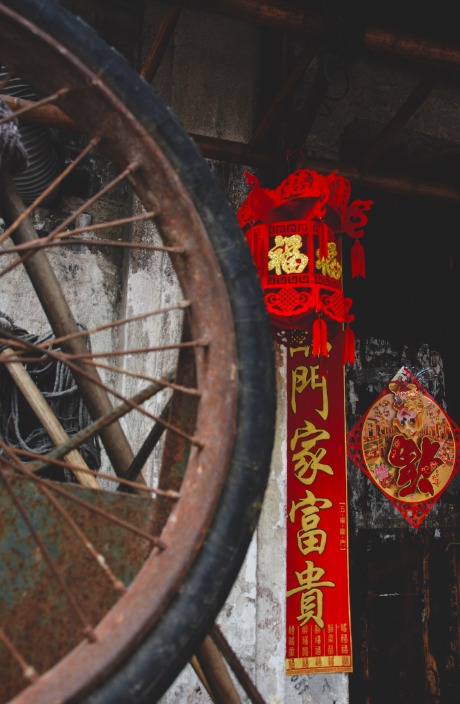
Photo by Dominic Ngai
Tsai writes, “The original city landscape therefore faces unprecedented threat; old and deteriorated lilong blocks are not qualified to display the progress brought by economic reform, and the land they occupy is usually in a good location of the inner city. These current situations are all challenges to lilong preservation in Shanghai.”
When I first visited the neighborhood in Laoximen for this story – months after the official announcement was made – it was obvious that the changes are happening in every corner. Exterior walls of vacant properties now all have red markings like ’claim,’ (收) ’demolish,’ (拆) or ’seal’ (封) spray-painted onto them. Steps away, the bright and cheerful Chinese New Year greetings of ’double happiness’ (囍) and ’blessings’ (福) are starting to fade and peel off from the doorways of residents who are holding out for better compensation.
A member of the remaining faction is Tang, a Shanghainese man in his 60s. He’s enjoying a cigarette with his buddies next to a corner store on Kongjia Nong (Kong Family Alley) when we meet. “We have a big family, and the houses we’ve been shown so far in Jiading aren’t going to fit us all. I don’t know where I’m going yet. I guess I’ll move when I really have to. Mei banfa,” Tang says.
"[Some residents] said to our group: 'Are you here to look at the neighborhood? Come and look, you should see this. It’s not going to be here for long' "
It’s a scene that Historic Shanghai’s Patrick Cranley and Tina Kanagaratnam have seen time and again. For the last few months, the two cultural historians and longtime Shanghai residents have been conducting a series of tours around Laoximen, highlighting its architectural gems and the colorful history of these soon-to-be demolished lanes, as well as the stories of the people who live in them. What was supposed to be a one-off outing has become a recurring program on Historic Shanghai’s monthly tour schedule due to popular demand.
“Back in mid-December, we ran into a group of residents who were packing up their belongings before an early moving deadline. They said to our group: ‘Are you here to look at the neighborhood? Come and look, you should see this. It’s not going to be here for long,'” says Kanagaratnam, recalling a scene that left a deep impression in her mind.

Photo by Dominic Ngai
While there isn’t a hard-and-fast date as to when everyone must clear out, a couple of shopkeepers on Fangbang Zhong Lu, the northern border of the area designated for demolition, tell me that they’re being asked to close down by Chinese New Year – February 2019. A sense of urgency, mixed together with the sharp smell of dried urine from a nearby public bathroom for the construction workers of a flattened lot right across the street, grows thicker in the air each day.
“It’s a shame that you can only get people to come out to see the neighborhood when they hear it’s going to be demolished,” Cranley comments. “But at the same time, it’s wonderful that hundreds have now seen this old section of Shanghai while it’s still in tact and in context – the context is what’s going to be lost when these neighborhoods are all gone.”
Seen from Above
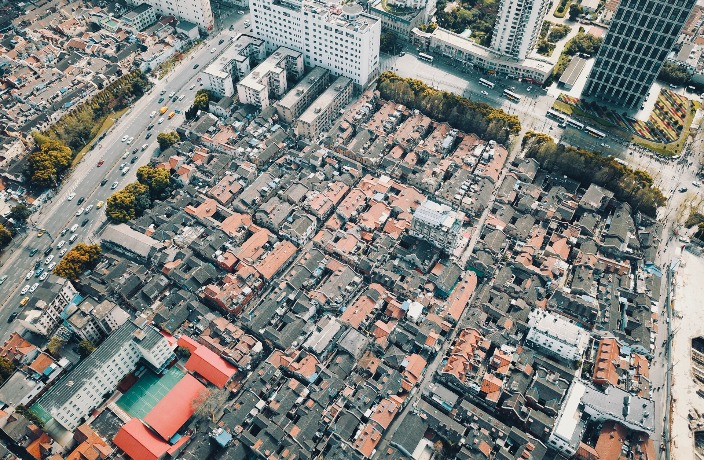
Photo by David Olshefski and Joe Nafis
"Look, the foreigners have a drone,” an elderly resident points out to her friends as videographers Joe Nafis, David Olshefski and I look for a good place to take off amidst a messy network of power cables above our heads.
We finally settle in a semi-abandoned parking lot at the corner of Songxue Jie and Fangbang Zhong Lu. As their UAVs disappear into the sky, real-time footage shown on their remote controllers offer a better understanding of the area’s topography: century-old lanehouses’ brown, grey and black rooftops are juxtaposed against the modern high-rises in Xintiandi and People’s Square, revealing a glimpse of Laoximen’s likely future.
"Does Shanghai really need another mall?"
“What really surprised me is the scale of all the sheer amount of construction that is happening in the city,” says Nafis. The American videographer, whose time-lapse video of the construction of Shanghai Tower had gone viral internationally, recently released a new video entitled ‘Demolish’ – a seven-minute film in which he documents the process of destruction in Hongkou and Jing’an since 2011. “When I was plotting out all the locations to shoot on a map, I realized that’s nearly half the city.”
He adds, “The purpose of ‘Demolish’ is to show what that process looks like. Some think it’s good, others think it’s bad… it is what it is. But to be honest, does Shanghai really need another mall?”
‘Demolish’ by Joe Nafis. Outside of China? Watch on Vimeo here
The Old City's Foregone Flavors
Zhang, a middle-aged ayi who runs a noodle shop with her husband out of their home on Wengjia Nong, doesn’t think so. “We’ve been living in this house for more than 40 years,” she says while scooping some hot broth into a bowl of Shanghainese wontons. Like many other holdouts, Zhang is still in negotiations with the government regarding her compensation, and her future is up in the air at the moment. She sighs, “I don’t know when yet, but small mom-and-pop restaurants like ours must leave eventually… Mei banfa.”
Just a few blocks away on Shouning Lu, which used to be one of Shanghai’s most bustling night markets with a bountiful selection of street food and snacks, the pre-recorded announcement blasting from a recycle man’s loud speaker is the only background noise you’ll hear: “Air conditioning units, refrigerators, microwaves, computers…”
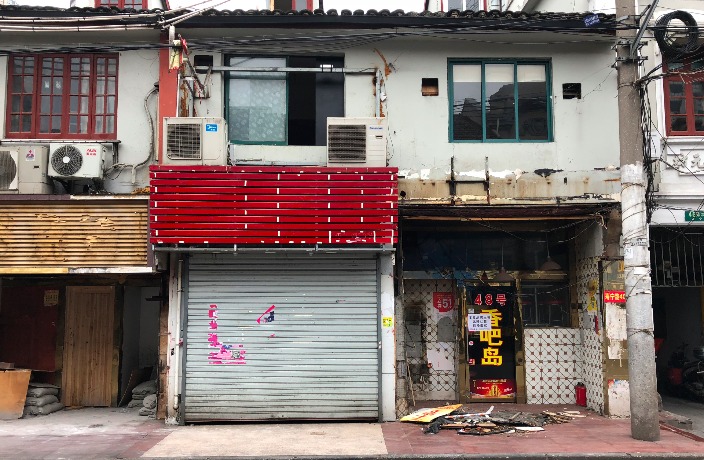
Photo by Dominic Ngai
“We’ve just been notified that we’ll be shut down due to licensing issues,” the operator of A Jun Restaurant tells me over WeChat when UnTour’s Jamie Barys connected us. Having worked with them since the food tour company began eating through the city in 2010, the gentrification of the Old City is something that Barys has witnessed firsthand.
“We’ve had to reroute sections of our Night Eats tour several times over the years to deal with the [changing neighborhood], but we always managed to keep A Jun on the route,” she explains. “But when it became clear that the government was likely going to tear the Shouning Lu area down too, we decided to move our entire tour to another part of the city.”
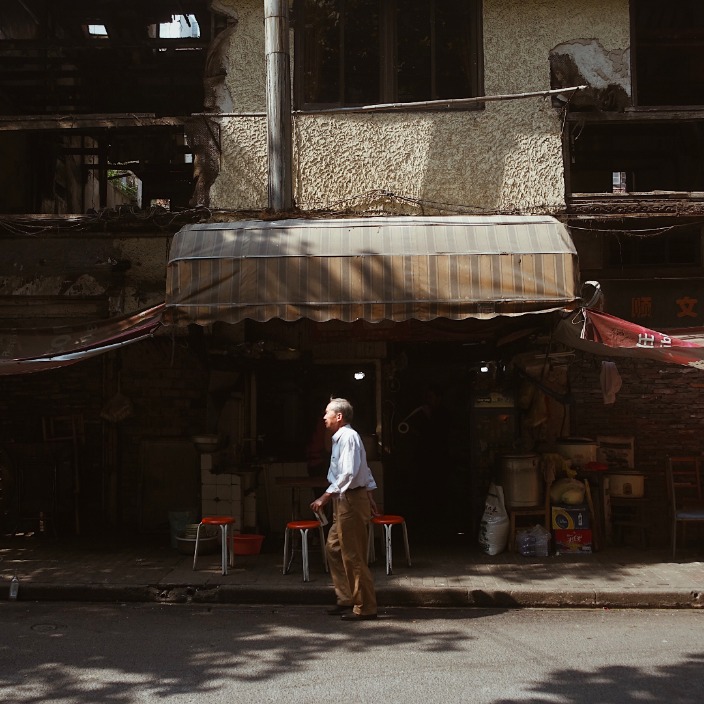
Photo by Leon Yan
In addition to Shouning Lu’s famous crawfish, people like the family who run A Jun are what Barys will miss the most about the area. She adds, “I just hope that if they put a mall in here, they’d reach out to those who lost their shops to fill in the food court first. Maybe one day Shanghai will take Singapore’s hawker center approach to preserve its street food culture, but it won’t be in time to save Shouning.”
The Tradeoff
The conflict between preservation and commercial interest is something that UPenn’s Wan-Lin Tsai details in her research. While the idea of protecting historic buildings around Shanghai has been on the government’s mind for three decades, lilongs have always been underappreciated and are most commonly sacrificed for commercial gain.
In 1989, a list of historically significant architecture – including many structures in the former French Concession and along the Bund built between 1840 and 1949 – were selected to be protected by law. By the early 2000s, successful lilong redevelopment projects like Xintiandi and Tianzifang became good examples to illustrate that the city has “already realized that there must be a balance between development and preservation… However, resolving the conflict between [these issues] presents a large challenge, especially when the significance of historic heritage is not well understood and the power of investing capital is predominant,” writes Tsai.
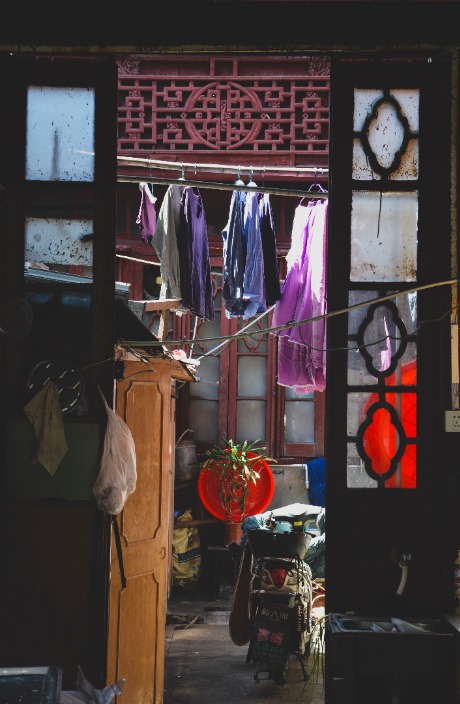
Photo by Dominic Ngai
While historic preservation groups in China don’t have any decision-making power, many are still very passionate about raising the awareness of these issues, in the hopes that by doing so, more buildings will be saved over time. From a business perspective, Historic Shanghai’s Cranley notes that rehabilitation tax incentives like the ones that the US offers could potentially be a way to motivate real estate developers to take more proactive measures to save and protect these architectural gems. But despite everything that’s happening around the city, he and Kanagaratnam still consider Shanghai as one of the best preserved cities in China.
"At some point, you'll only be able to experience what a lane neighborhood is like at a museum"
Back on Kongjia Nong, an elderly woman in her 80s is watching the world go by on a sunny spring day as Historic Shanghai’s tour group pass by her home. “I live on the third floor,” she says in Shanghainese, pointing to her flat with a big smile. Just around the corner, her neighbor is sitting on an armchair, folding some gold ingots for her ancestors. Scenes like these may no longer be around by this time next year.
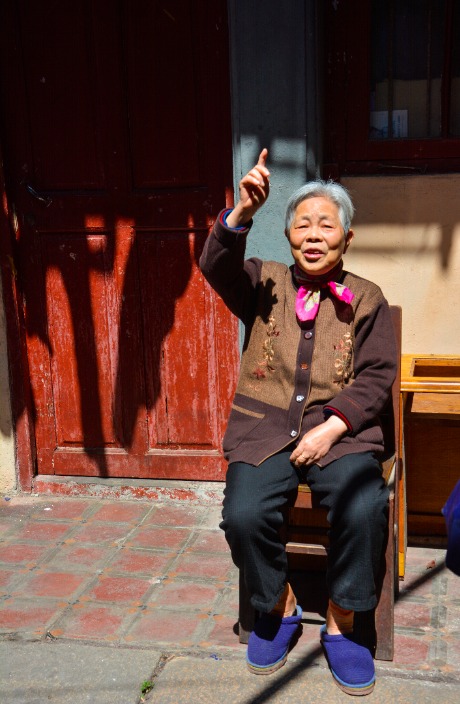
Photo by Dominic Ngai
“At some point in the future, you’ll only be able to experience what a lane neighborhood is like at a museum through computer generated maps and models,” Cranley says. “But VR technology won’t be able to replicate that sense of discovery you get from wandering through these lanes, not to mention all these different layers of life and culture here… that’s something that we’d miss the most about the Laoximen area.”
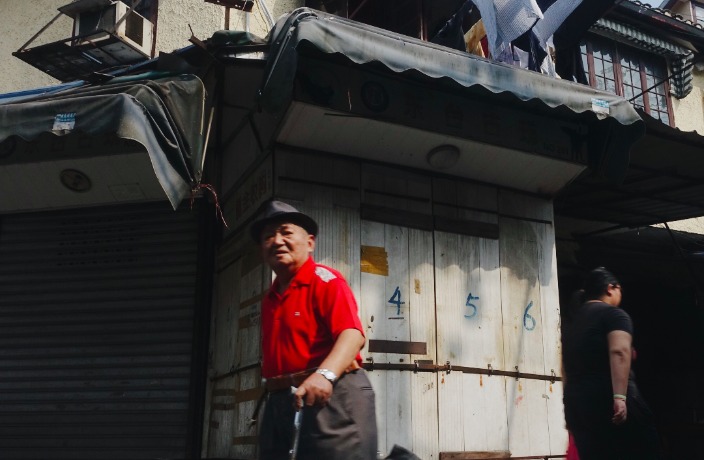




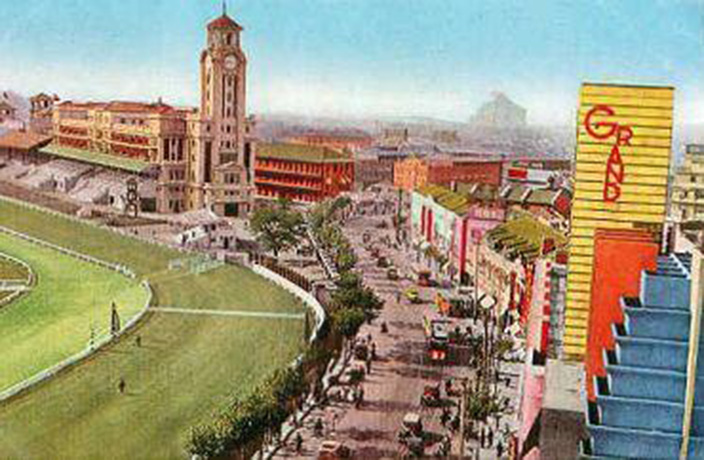















0 User Comments